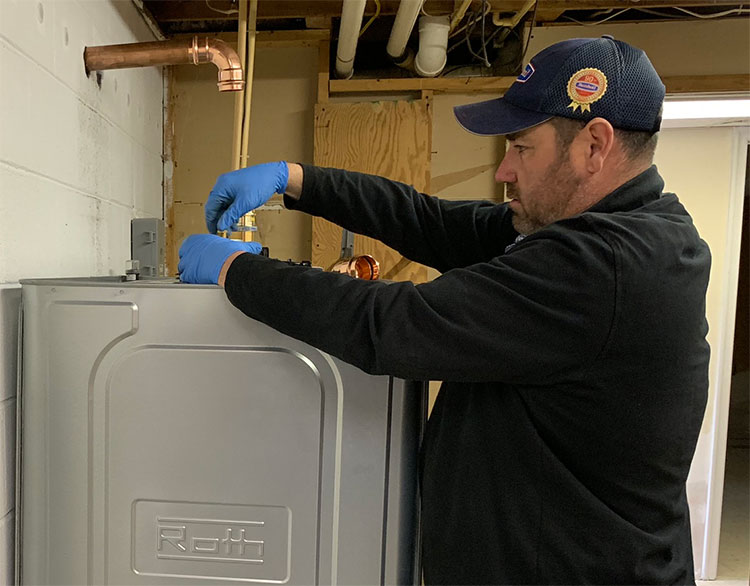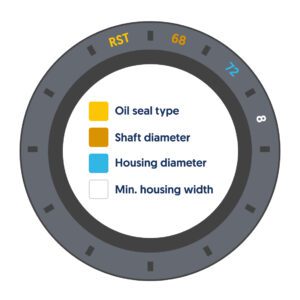Installing an above ground oil tank can be a difficult and intimidating task. But with the right tools and guidance, it can actually be quite easy!
This step-by-step Guide to Above Ground Oil Tank Installation will walk you through the entire process of installing an above ground oil tank, from choosing the right type of tank for your needs to connecting all the necessary pipes and valves. We will cover safety considerations, proper installation techniques, and ways to maintain your tank for years to come.
We’ll also provide tips on how to save money by doing the job yourself instead of hiring a professional contractor. With a bit of patience and perseverance, you can have your above ground oil tank installed in no time.
Choosing the Right Above Ground Oil Tank for Your Needs
Choosing the right above ground oil tank to fit your needs is an incredibly important decision. Depending on the size and type of your tank, you’ll need to consider factors such as price, location, and ease of installation.
Here are a few key things to consider:
- Size: Choose a tank that fits the capacity you need for your home or business. Ensure that it has enough space for sending, storage, and expansion of oil.
- Location: Make sure you have a safe place for placing the tank in your yard. Avoid installing it near water lines, septic systems or near any plants or shrubs that may be damaged by fuel leakage.
- Compatibility: Make sure the materials and fittings you chose are compatible with your fuel type. For example, some tanks are only suitable for heating oil while others may also be compatible with diesel fuel or gasoline.
- Regulations: Research local building codes before selecting a tank to ensure it meets applicable safety requirements.
By taking these few steps, you can make sure that you are choosing an above ground oil tank that is perfect for your needs.
Permitting and Code Requirements for Above Ground Oil Tanks
Before you purchase and install an above ground oil tank, it is important to check the local regulation for aboveground storage tank. This can involve contacting your local building and fire departments in order to determine what permits may be needed for installation.
Your local codes may also place restrictions on the size of the oil tank, where it can be installed, how it must be set on property lines, fuel quality requirements, and other relevant safety considerations.
It is also important to check with your homeowner’s insurance provider to determine if they require any additional information or have any restrictions related to the installation of an above ground oil tank. Failure to check with both your local government officials and insurance provider could result in costly fines or permit violations.
Preparing the Installation Site for Your Above Ground Oil Tank
When it comes to installing an above ground oil tank, the most important step is preparing the installation site. Here’s what you’ll need to do to get the job done:
- Pick a location in your yard that is flat and can support the weight of a full oil tank. The location should be easily accessible for installation, maintenance, and refueling. It is also important to check for any local regulations or restrictions on where an oil tank can be installed.
- Make sure that the area chosen is at least 20 feet away from any other structures (such as buildings, decks, or patios). This allows enough space for maintenance and safe refueling operations.
- If necessary, you can level the area by removing vegetation or soil and replacing it with gravel or crushed stone material – this will help improve drainage in the area and provide more stability for your tank.
- Once you have your installation site ready, it’s time to install your above ground oil tank! With careful planning and preparation, this project will be easy to complete with minimal disruption to your daily routine or backyard landscaping.
Assembling the Above Ground Oil Tank Components
Assembling the above ground oil tank components is a straightforward process and requires basic tools such as wrenches, sockets, a level and a screwdriver. Here’s how to get it done:
- Place the oil tank base onto a level surface and assemble the components accordingly.
- Place the top portion of the tank onto its base, making sure that all components are properly secured and aligned.
- Attach the tank legs to the base using lag bolts that are provided with the kit. Secure them tightly and check for any wobble or movement when attaching the legs to ensure that the tank is firmly in place.
- Add additional bracing along each side of your above ground oil tank by installing a steel brace for extra support of your newly installed storage unit. This will help prevent possible damage from external factors such as strong winds or heavy rains.
- Connect all pipe fittings to their proper locations according to local codes and regulations before filling up your above ground oil tank with fuel or other type of oil storage material for use in commercial or industrial applications.
Installing the Above Ground Oil Tank
Now that you’ve ordered your above ground oil tank, it’s time to install it. The process can be broken down into several steps:
Set Up Your Tank
Once the tank arrives, you’ll want to make sure it is level and stable. You may need to dig a hole or secure the tank with appropriate anchoring devices. Once the tank is set in place, connect the regulator and vent pipes as directed by your manufacturer.
Test & Fill Your Tank
Once the installation is complete, have your local fire department inspect and approve your tank before using it. Once approved, open all valves and fill the tank slowly. Monitor the level frequently and stop when you reach about 95% full. This will leave room for expansion when fuel is added or taken out of your tank.
Maintain Your Tank Regularly
Make sure to inspect your above ground oil tank regularly for signs of corrosion, leakage or any other damage, as these can all lead to costly repairs or replacements in the future. By keeping up with regular inspections and maintenance on your above ground oil tank, you can ensure that it’s always safe and ready for use!
Connecting the Above Ground Oil Tank to Your Oil Supply and Appliances
Once you have finished the installation process for your above ground oil tank, the next step is to connect it to your oil supply and any appliances that require fuel oil. This is a relatively simple process, but should be undertaken with caution and care.
Here is a step-by-step guide to connecting an above ground oil tank:
- Ensure the tank is securely positioned and levelled – this will ensure that the tank can handle its fuel load without any problems.
- Locate the right connections between your appliance and the oil tank – different appliances will require different connection types, so make sure you check this thoroughly before proceeding.
- Connect your supply pipe to the tank’s fill point – use a flexible hose with appropriate fittings, such as a union or isolation valve. If possible, use a secondary fill line that can be used as an overflow while filling up the tank.
- Securely attach all connections with any necessary supports – take extra care to ensure that there are no leaks at any of these points, and check regularly for signs of rust or corrosion in order to maintain safety standards at all times.
- Test all connections for gas or oil leaks – if present, take corrective steps immediately to rectify them before using your new system for heating purposes .
- Connect up your venting system according to local regulations – these systems are essential for allowing fuel vapors from inside the tank to escape safely into the atmosphere without causing any harm .
7- Check your local regulations regarding spill containment systems – it is
important that any spills from your above ground oil tank be contained properly in accordance with local codes .
8 . Install an alarm system to alert you
Conclusion
Installing an above ground oil tank is a task not to be taken lightly. Taking the time to plan and prepare for the task, as well as having the right materials and following the proper safety precautions, can help ensure a successful installation. It’s important to be aware of local regulations and contact the appropriate authorities if needed to help ensure that all requirements are met. By following these steps and the instructions provided in this guide, the installation of your above ground oil tank can be completed with ease and precision.




